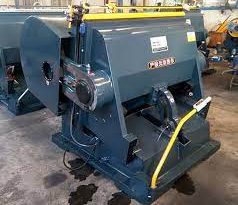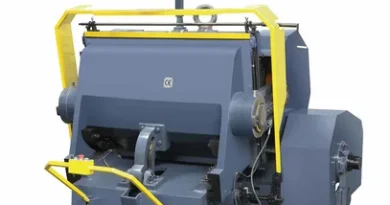“Cutting-Edge Evolution: How Technological Breakthroughs in Die-Cutting Machinery Are Reshaping Manufacturing Efficiency, Sustainability, and the Art of Precision”
In the dynamic world of manufacturing, die-cutting machinery represents a cornerstone of innovation, enabling precise shapes and designs out of various materials at high speeds. This process, crucial for creating packaging, labels, and intricate components, has been transformed by technological advancements, ushering in a new era of efficiency, versatility, and digital integration.
Leveraging Automation for Enhanced Precision
The incorporation of automation into die-cutting machinery has significantly elevated the precision and repeatability of cuts. Sophisticated software controls the machinery, ensuring each cut is executed flawlessly, reducing waste and enhancing product quality. This automation also allows for rapid adjustments to die configurations, accommodating short runs and customized orders with ease, a must in today’s market where personalization is key.
The Role of IoT in Operational Excellence
The Internet of Things (IoT) has connected die-cutting machinery to the digital ecosystem, providing a wealth of real-time data. This connectivity allows for remote monitoring and diagnostics, predictive maintenance, and streamlined production processes. By analyzing data from IoT devices, manufacturers can optimize their operations for maximum efficiency and minimize downtime, ensuring a continuous production flow.
Innovations in Materials and Sustainability
Technological advancements have also extended to the materials used in die-cutting processes, with machines now capable of handling a wider range of materials, including recyclable and sustainable options. This adaptability supports the industry’s shift towards greener practices, allowing businesses to meet both regulatory demands and consumer preferences for environmentally friendly products.
Future Trends: AI and Machine Learning
Looking ahead, the integration of Artificial Intelligence (AI) and machine learning into die-cutting machinery promises to further revolutionize the sector. These technologies can predict maintenance needs, optimize cutting paths, and even adjust operational parameters in real-time for enhanced efficiency and material utilization. As AI and machine learning become more embedded in die-cutting processes, the potential for innovation and improvement in manufacturing practices is boundless.
Conclusion
The evolution of die-cutting machinery, fueled by technological advancements, is setting new standards for what can be achieved in manufacturing. From automation and IoT to sustainable materials and the future promise of AI, these innovations are not just enhancing the capabilities of die-cutting machinery but are also driving the entire manufacturing industry towards a more efficient, sustainable, and innovative future.



